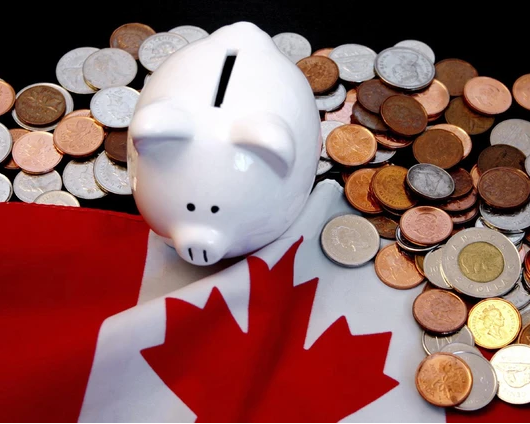
by Thomas Johnson
“Inflation” can be a very scary word in Manitobans’ lexicon. Especially if you lived through the hyper-inflationary years of the 70s and 80s! Well “inflation” is making its way back into the headlines as our current economic landscape is driving the cost of living up dramatically (4.4% per year as of September).
What does high inflation mean for your retirement? For your investments? Is there anything you can do to “inflation-proof” your financial plans?
How Does Inflation Impact Your Retirement?
When you’re retired, you’re living off an accumulation of all the assets and benefits you’ve accrued in your working years. Those assets are routinely drawn down upon, ideally to provide a certain after-tax lifestyle. If your retirement lifestyle has suddenly become more expensive because food costs more (+3.9%), transportation costs more (+9.1%) and housing costs more (+4.8%), you may need to make some changes!
The good news? Many benefit programs, like Canada Pension Plan and Old Age Security, routinely enhance their benefits in response to changes in the Consumer Price Index. If your retirement income includes these programs, you likely have some built-in inflationary protection.
How Does Inflation Impact Your Investments?
Generally speaking, higher inflation erodes the real return you receive on your investments. In a world where you earn 5% on your investments and inflation is 2%, you’ve improved your purchasing power by 3%. In a world where you earn 5% on your investments but inflation is 5%? Your real return is effectively 0%!
If you’re a more aggressive investor, with a higher weighting in equities, you’ll likely face minimal investment impacts directly tied to inflation. This is because inflation by itself has little impact on the valuation of equities. In theory, if the cost of goods goes up by X%, then the corporations selling those goods will see their revenue go up by (at least) X% to compensate.
If you’re a more conservative investor, with a higher weighting in fixed income investments, inflation has a very real impact on you. Aside from the reduced purchasing power, inflation tends to equate to higher bond yields and lower bond prices. As central banks raise interest rates, future issues of bonds will deliver a higher yield. However, any existing bonds with comparatively lower yields will see their value decrease as a result. A double-edged sword for harming fixed income investors who are anticipating selling before maturity.
How Should You “Inflation-Proof” Your Plans?
For starters, revisit your retirement plan and adjust your projections for higher inflation. If your existing plans have the wiggle room to sustain long-term, higher-than-average inflation, then there’s nothing to worry about! If they can’t, you may need to consider making some adjustments to your lifestyle, retirement deadline, savings rate, portfolio construction, or any other variable that you feel comfortable changing.
As far as investment portfolios go, review your fixed income holdings for inflationary risk. Your investment advisor should be able to give some recommendations for enhancing real returns and/or reducing risk in our current environment.
The moral of the story? Inflation is very uncomfortable and very noticeable when you’re at the checkout counter in the grocery store or paying at the gas pump. But it doesn’t have to ruin the next 20, 30 or 40 years of your retirement plan!
The Central Bank of Canada is expected to keep a very close eye on inflation and take swift action to keep it contained. Hopefully “inflation” in the news cycle is very short-lived this time around.

by Thomas Johnson
A lot of words in personal finance get used interchangeably. Perhaps none more so than ”investing” and “saving.” You’ve likely seen countless commercials, billboards and flyers recommending you “save for retirement” or “invest for your future.” What’s the real difference and, at what point, does it become gambling?
What Does it Mean to Save?
“Saving” is simply the act of stashing money away for a future need. Whether you’re putting that money into your piggy bank, a savings account, or under your mattress, so long as you’re earmarking dollars for the future you’re saving.
Saving is performed in such a way that you’ll be assured the money is there when you need it. This inherently means you should be saving in ‘low-to-no risk’ accounts. Sure you won’t get much of a return when you don’t take risk but having the full account value on hand, when you need it, is too important to risk!
What Does it Mean to Invest?
“Investing” is the act of buying a security or investment product that has the opportunity to produce an income in the future. You can invest in real estate and (hopefully) earn rental income; you can invest in bonds and (hopefully) earn interest payments; or you can invest in businesses and (hopefully) earn dividends.
These income-producing assets can also produce appreciation in value. They not only have the potential to generate income but may also be worth more in the future when you sell than they cost to buy!
Investing is expected to produce a higher return on your capital than saving, since you’re accepting more risk. Real estate markets fluctuate, bond sellers can default, and businesses can go bankrupt. Wise investors will take action to mitigate the major risks and continue to remain invested so long as the (potential) returns continue to be more important than cash on hand.
What Does it Mean to Gamble?
“Gambling” is the act of participating in a zero-sum game; a game where there’s a loser for every winner, and you have no control over the outcome. When you buy assets that can appreciate or depreciate in value, but offer no guarantees and no potential for income, you’re gambling.
Gold, silver, art, and cryptocurrency are great examples of gambles. You bought the asset because you expect it to increase in value. If it does, you’ve won and the people you’ve bought from/sell to have lost on that growth. If it decreases in value, you’re the loser in that scenario. This doesn’t make gambling “bad” per se, it just means it’s a higher-risk venture than savings or investments.
Putting It All Together
A good investment plan likely contains elements of savings, investing and gambling. When you have time on your side, capacity for risk and wiggle-room to make up losses, you can afford to skew your plan towards riskier ventures. When your goals are imminent or you don’t have the capacity for loss, you’ll skew towards safer holdings.
Next time you look at your personal balance sheet or your investment statements, ask yourself which line items are truly investments, which ones are only savings and if any are gambles. You’ll have a better understanding of the risks they hold and the opportunities they present! If you find your holdings don’t line up with your goals for that money, it’s time to make a change.

by Thomas Johnson
The Guaranteed Income Supplement (GIS) is a social safety net for low-income seniors in Canada. As the name implies, it’s a program meant to supplement your income up to a guaranteed minimum level.
When talking with clients, many are aware of the existence of GIS, yet almost all of them share the same questions: Who qualifies for the GIS benefit? How much can you receive? How can a person maximize potential benefits?
Who Qualifies:
In order to qualify for GIS payments, you must already be receiving Old Age Security (OAS) income. The programs are intertwined; so if you’ve applied for OAS then your qualification for GIS will be considered at the same time and reviewed each year. OAS benefits can begin as early as age 65 or as late as age 70, meaning you must be at least 65 years old in order to start receiving GIS.
The second factor in qualifying, after age, is your taxable income (excluding OAS benefits). GIS benefits are income-tested but also classified based on your household situation. There are four main household scenarios for calculating GIS:
- If you’re single, widowed or divorced, your annual income must be less than $19,248 to receive any GIS support.
- If your spouse/common-law partner receives full OAS benefits, your combined incomes must be less than $25,440 to receive GIS support.
- If your spouse/common-law partner doesn’t receive OAS or GIS, your combined incomes must be less than $46,128 to receive GIS support.
- If your spouse/common-law partner receives GIS themselves, your combined incomes must be less than $46,128 to receive GIS support.
How Much Can You Receive?
The short answer is: it depends! The long answer is there is a wide range of monthly (tax free) income options, ranging from less than $1 up to a maximum of $948.82 (as of October 2021). GIS benefits are clawed back very quickly as your taxable income grows, starting from the very first dollar. To understand how much you could be eligible for, check out the Government of Canada Website and search for the household scenario and income level applicable to you.
GIS benefits are adjusted for inflation and increased according to the Consumer Price Index each quarter to keep up with the cost of living.
How Can A Person Maximize Potential Benefits?
Given GIS is meant as a social safety net, relying on the program likely shouldn’t be a main focus of your retirement plans. However, you may find you can anticipate some earning years that flirt with the GIS limits. In these years, you might just be able to adjust your taxable income to capture some additional retirement resources. You can lower your income for a year or more by:
- Deferring the start date of your Canada Pension Plan benefits past the age of 65.
- Deferring receiving income from RRSPs or a Pension to a future year.
- Deferring receiving salary or dividends from a closely held corporation.
- Taking withdrawals from Non-Registered accounts or TFSAs to cover expenses.
If your retirement assets afford you the luxury of timing out incomes correctly, you may be able to boost your overall retirement plan by tapping into the GIS benefit for a year or more. This program is the perfect example of the importance of strategizing your retirement income sources, years in advance. If you take the wrong steps, the benefits are easily out of reach. If you take the right steps, you may find you have more money in retirement than you ever anticipated!

by Thomas Johnson
Canada Pension Plan (CPP) is truly THE foundational element for most Manitobans’ retirement plans. Created in 1965, CPP has been a mandatory fixture for Canadian employees for decades. You’ve likely noticed deductions off your paycheques to contribute to CPP; perhaps you’ve talked with friends or family members about receiving CPP. Today’s post is all about understanding the nuances behind this integral program so you can better understand how it fits into your personal situation.
The Basics
To understand why CPP exists in its current format, you need to start with the general philosophy behind it. CPP is not meant to be the ONLY piece of the retirement puzzle. Rather, the goal of CPP is to replace ¼ of your average income earned in your working years. That amount is capped at a maximum threshold and indexed to inflation to maintain standards of living.
Think of CPP as a legislated rule that Canadian employees, and their employers, save enough in their working years to have 25% of their income continue into retirement (proportionately less for high income earners). The savings are deducted through payroll, managed through the national CPP Investment Board, and income is distributed through Service Canada.
How Are My Contributions Determined?
You are required to contribute 4.95% of every dollar in earned income above $3,500 and less than the Yearly Maximum Pensionable Earnings (YMPE for short), an annually adjusted figure. For example: given that 2021’s YMPE is $61,600, the most a Canadian will contribute to CPP this year is ($61,600 – $3,500) x 4.95% = $2,875.95. Your employer is required to match your CPP contributions; meaning the self-employed technically contribute twice as much!
If you earn $61,600 or more this year, you will have maximized your CPP contributions for 2021. After you’ve capped out on annual contributions you’ll likely notice your net pay grow since your employer is no longer withholding any more CPP contributions for the year.
How Is My CPP Payment Calculated?
Every person’s CPP payment is unique to their working career. You receive credits for the number of years working and contributing to CPP, starting at age 18, factoring in your contributions along the way. Everyone is allowed to remove their eight lowest earning years from the calculation. So your time spent in post-secondary education, raising kids or working abroad has a smaller impact on your final outcome.
The end arithmetic from your CPP credits is a percentage of that year’s maximum payment at “normal retirement age.” Right now, normal retirement age is 65. However, you have the option to start your CPP as early as 60 or as late as age 70. Starting early will cost you a penalty, reducing your payment by 0.6% for every month. That means an individual who starts at age 60 will receive 36% (0.6% x 60 months) LESS than if they had waited until age 65. Conversely, you will receive a bonus of 0.7% for each month you defer taking CPP after your 65th birthday. Meaning a 70 year-old would receive 42% (0.7% x 60 months) MORE each month than if they started CPP at normal age.
Where Can I Find My CPP Estimate?
You can create an account and log into Service Canada’s website to view your current CPP trajectory. This is a great exercise if you’re nearing retirement age or considering starting your CPP payments within the next few years!
There are many, differing opinions on the cost and value of the Canada Pension Plan. At the end of the day, I firmly believe that having a guaranteed source of income in retirement is a net benefit to the vast majority of us! CPP may not be the perfect program for every situation but it is a nice foundation on which to build your retirement plans.

by Thomas Johnson
It’s hard to believe that September is approaching its end. Fall is here and we’re looking at only three short months left in 2021! Just because the year is winding down doesn’t mean you should shelve thinking about your finances until the next one arrives. Consider using this time to straighten your financial house by:
- Tax Planning
The waning weeks and months of a calendar year is the perfect time to review your tax plans. You’ve likely already accrued most of your taxable income for the year and know what’s left to come. If you have some room in your tax plans for additional income, make the most of this knowledge by implementing strategies that suit your goals, like:
Tax loss harvesting on non-registered investments.
De-registering additional retirement funds.
Selling appreciated property at a known tax rate.
- Rebalance Your Portfolios
I’ve written before about the dangers of portfolio drift. The final quarter of the year is a perfect time to think about strategically rebalancing your investments to get back in line with your target allocation. If the markets this year have been kind to some of your holdings (and less-kind to others), you’re not alone! Rebalancing will reset your portfolio to its intended alignment and keep your level of risk under control.
- Revisit Your Retirement Plan
The past few seasons may have sparked a few creative ideas or altered your goals for how to spend your retirement years. If last winter had you craving more travel, spring inspired you to buy a cottage, or summer has left you eying boats and RVs, you should talk about it. Don’t internalize shifting priorities. Have a conversation with your partner and with your Financial Planner to adapt your retirement gameplan for your newfound wishes.
- Bust Open Your Budget
Christmas is only three months away. Halloween is only five weeks away. Thanksgiving is closer still. The fourth quarter of the year is always filled with an uptick in spending so don’t get caught unaware. If you’re using credit for these non-routine purchases, be sure to plan for how to pay it back. If you’re dipping into savings, know which account it’s coming from and what your limit for spending will be. Doing so will help ensure your January credit card statement isn’t as terrifying as in years past!
Ending the year on the right financial footing is a great habit to build! Don’t let this window of time close without considering all the options available to improving your financial health. Having the hindsight for what has occurred already this year, plus the foresight to see ahead, is a valuable position to be in. Your future self will thank you for it.





Recent Comments